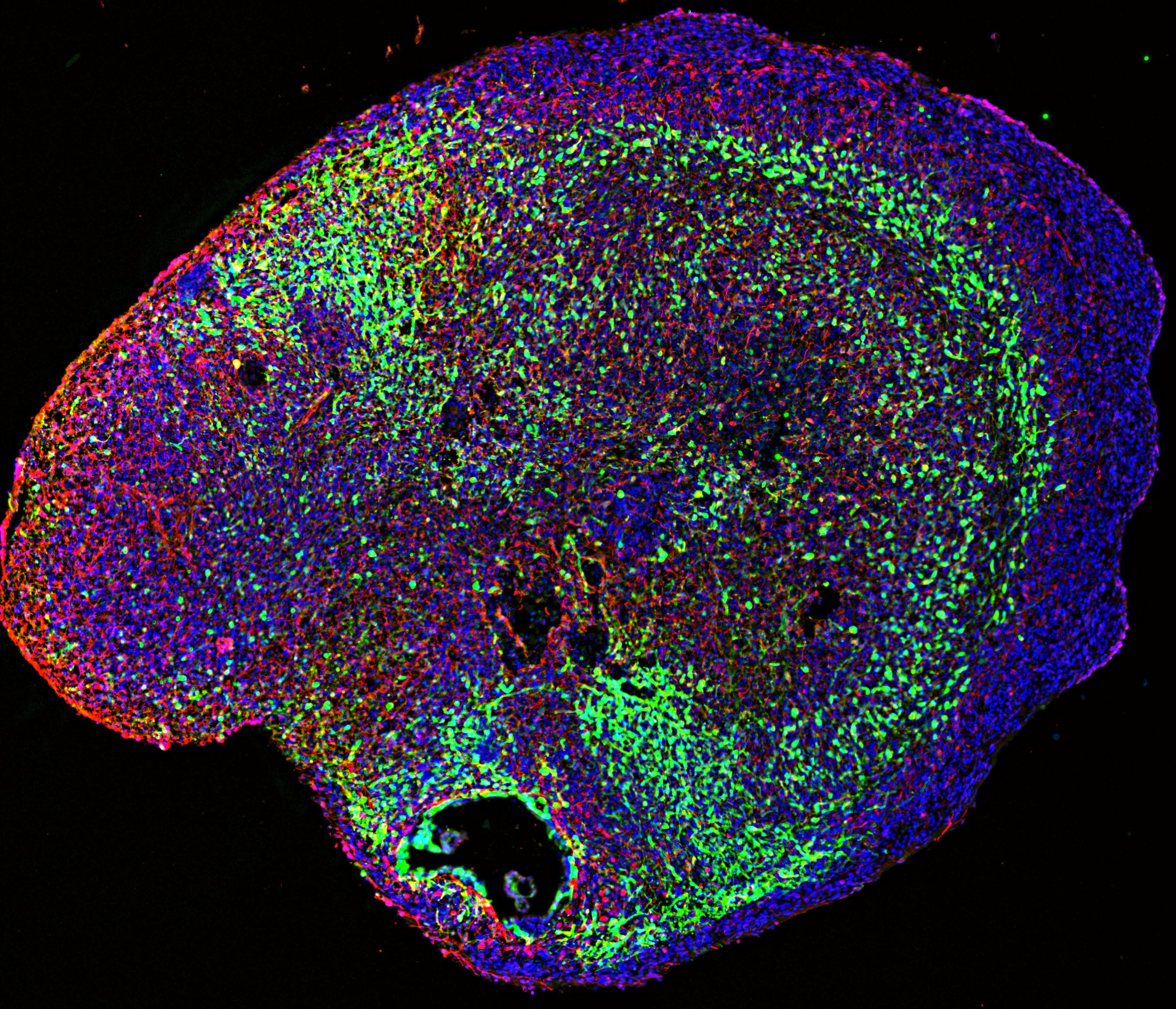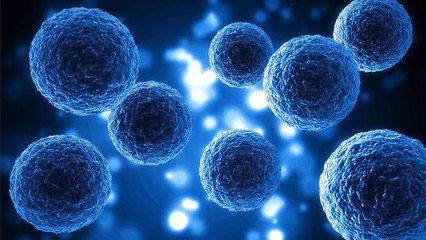Organoids
Brain Organoid | Photo from the Giorgia Quadrato Lab at the USC Keck School of Medicine
Organoids are self-organized 3-D structures that are typically derived from stem cells and mimic aspects of the key functional, structural, and biological complexity of an organ. To date, organoids have been created to form a number of tissues including kidney, lung, liver and brain. Although they are not exact replicas of the adult organ, they do replicate many aspects and thus give us a model of human development and adult tissues that we would not otherwise have. Organoids are valuable tools for advancing our understanding of biology and are used for a wide variety of applications, such as drug discovery, disease modeling, and cell therapy.
How are organoids used in research?
For many years, scientists have used model systems to study biology. These systems include yeast, yes, similar to the kind you use for baking, and fruit flies, like the ones around your overly ripe bananas. These models have been instrumental in the identification and study of specific genes and their functions. Mice are currently the standard small animal model for in vivo, or in living systems, experiments. Although yeast, flies and mice are valuable models to learn about human biology, they are just that - models - and all model systems have their strengths and weaknesses. One obvious weakness of the above models is that they are not human.
One of the key strengths of organoids lies in their origin – organoids are derived from human cells, making them more representative of human physiology and disease, compared to other model systems like yeast, fruit flies, or mice. Scientists use organoids for many applications beyond studying development, including disease modeling, drug development, and personalized medicine. They help researchers understand how our bodies normally grow and develop, and how diseases progress by modeling what happens during normal and diseased development of particular organs. Plus, because people respond differently to drug treatments, researchers are using organoids made from a patient’s own cells to test treatments and lean how individual patients might respond to them.
What is the value of this research?
Scientists are always trying to model specific aspects of human biology because direct experimentation in humans is limited (clinical trials are a notable exception). To understand important biological functions, like how a cell divides and how our genes work, and why they sometimes stop working normally and give rise to diseases, like cancer, scientists must find alternative methods. Only by understanding how normal processes break down and cause disease, can treatments for the disease be identified.
Organoid technology has been around for several years, but as the methods become more advanced, their potential applications expand. Scientists use organoids to study development, model disease progression, develop drugs, and more. For example, the human brain is almost impossible to access in a living being for both practical and ethical reasons. Organoids can model normal human brain development, and show what goes wrong during injury or disease, without having to touch the brain. Additionally, using organoids to study personalized medicine relieves patients of the time and physical burdens of drug therapy trial and error.
Stomach Organoids | Photo from the Giorgia Quadrato Lab at the USC Keck School of Medicine
What is the future of organoid research?
Efforts are underway to improve the complexity and functionality of organoids, as well as ensuring their reproducibility and scalability. One such direction is the integration of multiple organoids or connecting various organoids to study how different organs interact as we know that tissues and organs do not work in isolation. These interconnected organoids are meant to function in a dynamic environment much like they would in the human body. As in real-life human physiology, the response of one organoid to a drug or environmental shift may impact the response of another. Adding these layers of complexity to organoids is an emerging frontier in organoid research.
It’s inspiring to think that organoid technology, together with our knowledge of human development and disease, has the potential to impact modern medicine. With organoids, we can model new aspects of human development; better model diseases (whether hereditary, infectious, cancer, or immune-mediated); test and screen potential drug therapies; and eventually, develop new regenerative therapies. All this from stem cells.




